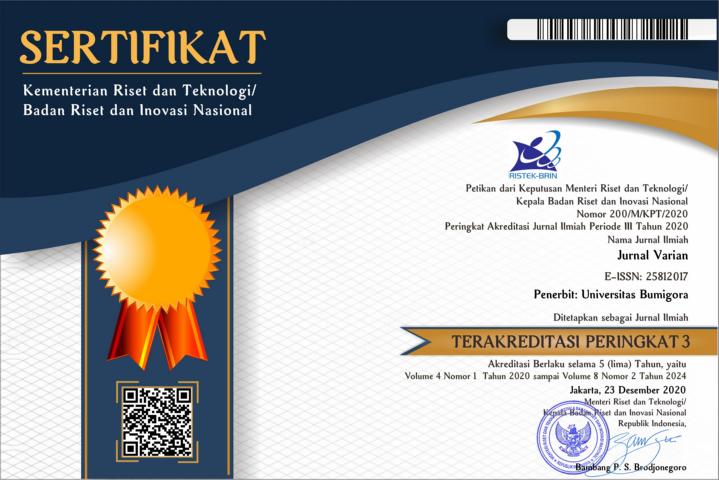Analisis Portofolio Investasi dengan Metode Multi Objektif
Abstract
In the formation of an efficient portfolio, many methods can be used. Of course with its own assumptions and advantages. In the process, reasonable investor assumptions tend to be risk averse. Investors who are risk averse are investors who, when faced with two investments with the same expected return, will choose an investment with a lower risk level. If an investor has several efficient portfolio choices, then the most optimal portfolio will be chosen. Optimal portfolio with mean-variance efficient portfolio criteria, investors only invest in risky assets. Investors do not include risk free assets in their portfolios. Mean-variance efficient portfolio is defined as a portfolio that has a minimum variance among all possible portfolio that can be formed, at the mean level of the same expected return. The mean variant method of the two constraints can be used as a basis in determining the optimal portfolio weight by minimizing the risk of portfolio return with two constraints. In this article the problem referred to is symbolized by lamda and beta. With this two-constraint method, the results obtained are more detailed so that they can describe the results of a sharper analysis for an investor.
References
[2] H. Anton and C. Rorres, Elementary Linear Algebra: Applications Version, 11th Edition, vol. 76, no. 8. 2013.
[3] T. T. Gustyana and A. S. Dewi, “Analisis Perbandingan Keakuratan Harga Call Option dengan Menggunakan Metode Monte Carlo Simulation dan Metode Black Scholes Pada Indeks Harga Saham Gabungan (IHSG),” J. Manaj. Indones., vol. 14, no. 3, p. 259, 2017.
[4] A. Zahroh, “Instrumen Pasar Modal,” Iqtishoduna J. Ekon. Islam, vol. 5, no. 1, pp. 51–65, 2015.
[5] R. M. Kramer et al., “Linkages Between Stock Market and Sovereign Credit Default Swaps Market,” J. Bank. Financ., vol. 36, no. 3, pp. 1–2, 2016.
[6] V. K. Rohatgi and A. K. M. E. Saleh, An Introduction to Probability and Statistics: Third Edition. 2015.
[7] D. Rosadi, Diktat Kuliah Manajemen Resiko Kuantitatif. Program Studi Statistika, FMIPA, Universitas Gadjah Mada, 2012.
[8] N. Laila, K. A. Saraswati, and H. Kholidah, “Efficient portfolio composition of Indonesian Islamic bank financing,” Entrep. Sustain. Issues, vol. 7, no. 1, pp. 34–43, 2019.
[9] F. J. Fabozzi, Manajemen Investasi. Tim Penerjemah Salemba Empat, Penerjemah. Jakarta: Salemba Empat. Terjemahan dari: Investment Managemant.
[10] A. . Bodie, Z., Kane, A., Marcus, Investasi. penerjemah. Jakarta: Salemba Empat. Terjemahan dari: Investments Sixth Edition., 2006.
[11] G. Primajati and A. Ahmad, “A Analisis Portofolio Investasi dengan Metode Mean Varian Dua Konstrain,” J. VARIAN, vol. 2, no. 1, pp. 24–30, 2018.
[12] T. M. Manik, P. Gultom, and E. Nababan, “Analisis Karakteristik Fungsi Lagrange Dalam Menyelesaikan Permasalahan Optimasi Berkendala,” Talent. Conf. Ser. Sci. Technol., vol. 1, no. 1, pp. 037–043, 2018.
[13] M. . Iqbal and A. . Ritonga, “OPTIMALISASI Portofolio Saham-Saham Lq-45 Dengan Menggunakan Capital Asset Pricing Model,” KARISMATIKA Kumpul. Artik. Ilmiah, Inform. Stat. Mat. dan Apl., vol. 4, no. 1, 2018.


















